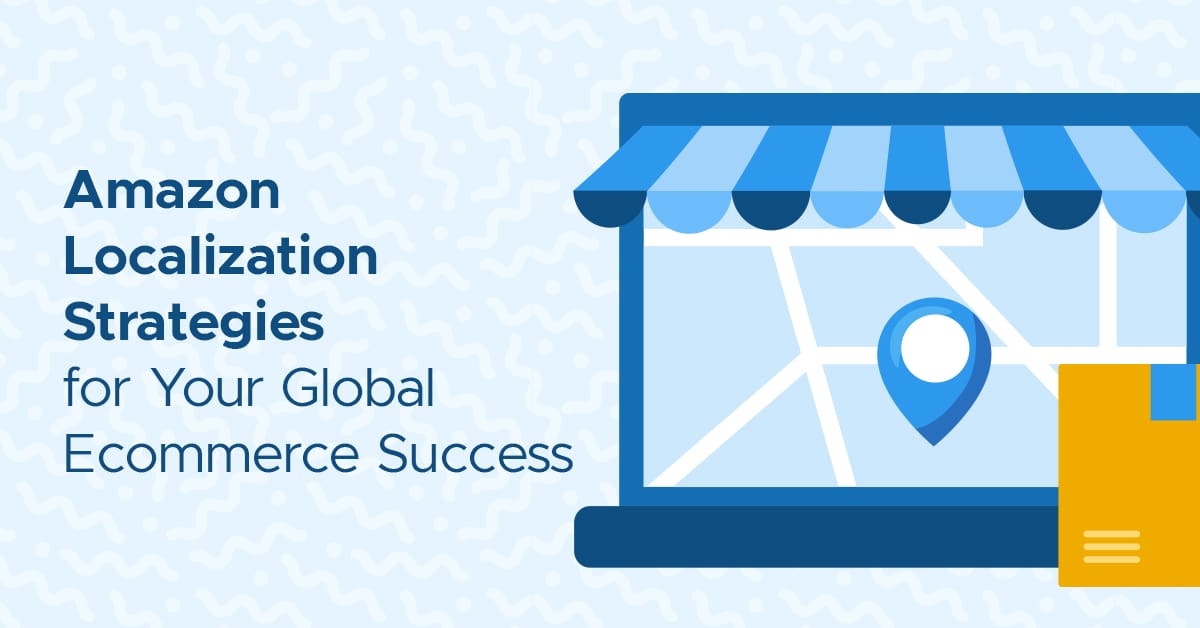
Amazon Global Selling Strategies

This is a guest post from Margin Business. Margin Business has winning Amazon global selling strategies that’ll guide you through global eCommerce translations and localization so you can resonate with various regions easily.
The eCommerce industry is growing, with estimates projecting it’ll reach $8 trillion in global sales by 2026. This surge is largely due to an increase in both internet users and developing economies. This means there’s a whole wide world of customers waiting for you outside your country’s borders.
To tap into these new markets, you need an Amazon global selling strategy. It’s the key to expanding your Amazon presence from a one-size-fits-all storefront to an international operation that connects with customers on a cultural level.
This article will cover the obstacles of selling on Amazon to international audiences, then reveal winning strategies for Amazon localization so your brand can thrive in global eCommerce.
The challenges of Amazon global selling
Expanding into an international market is a highly lucrative opportunity. However, there are a few roadblocks you may encounter along the way with your Amazon global selling strategy:
- Language barriers: Product descriptions written in another language can’t create the trust necessary to convince shoppers to buy. So, you’ll need to translate listings, keywords, and marketing materials for each target market.
- Cultural clashes: A product may sell like hotcakes in your country but might flop in others with starkly different cultural norms. Colors, symbols, and even product features have different meanings across nationalities, so you’ll need to research and market accordingly.
- A maze of regulations: Each country has its own set of import and export regulations, labeling requirements, and product safety standards. Failure to comply with these rules could lead to delays or even product seizure at customs.
- Logistical labyrinth: Fulfillment by Amazon (FBA) is great for domestic shipping, but expanding to international fulfillment can disrupt your workflow. Longer distances, complex customs procedures, and potential delays will add an extra layer of complexity to your operations.
Winning Amazon localization strategies
With the right Amazon global selling approach, you can overcome the above-listed obstacles with ease. Here are some key tactics to get you started:
- Narrow your target segments: Not all markets are equal. Focus on countries that have high growth potential for your products and lower competition. MyFBAPrep can provide invaluable support here by helping you pinpoint the most promising international markets.
- Speak their language (literally): Basic translation services aren’t enough to reach global markets. Hire professionals or tap into our network to make your product listings, descriptions, and keywords sound native to your target audience.
- Embrace local preferences: A one-size approach doesn’t fit all and in fact, can alienate international audiences. Adapt your product images and marketing materials to reflect local cultural nuances.
Pricing and payment strategies for Amazon global selling success
Mastering language and cultural barriers is only half the battle. Pricing and payment strategies are also crucial to turning international browsers into dedicated customers. When expanding your pricing strategy, be sure to:
- Crunch the numbers: Avoid simply converting your prices in a currency converter. Instead, conduct market research on local purchasing power and competitor pricing to produce a number that’s agreeable to new markets but still profitable for your business.
- Think locally with payments: Offer payment methods that locals are familiar with and trust, such as digital wallets or cash-on-delivery services, depending on the target market.
- Be transparent: Clearly explain any additional costs like international shipping fees or potential import duties. Consider offering free shipping above a certain order value to incentivize larger purchases and make your pricing more competitive.
Fulfillment hurdles for international sellers
FBA is a great tool for domestic sellers, but expanding internationally comes with its obstacles.
Here’s what you should look out for when creating your Amazon global selling strategy:
- Greater shipping complexity: Longer shipping distances mean longer delivery times, which can hurt customer satisfaction. Complex customs procedures can further disrupt your fulfillment flow.
- Foreign fees: FBA fees differ depending on the destination country and the product size and weight categories. Careful planning will help you avoid profit loss due to unexpected fulfillment costs after a sale.
- Complicated inventory management: Managing inventory between multiple FBA warehouses globally adds another level of complexity. Running out of stock in high-demand regions can slow down sales while overstocking ties up capital unnecessarily.
Wrapping up — Stand out in international markets with localization
A thriving Amazon business is well positioned to expand globally, but it requires thorough and thoughtful planning. You must research the international markets you intend to break into and adjust your listings, pricing, marketing strategies, and fulfillment operations to fit their preferences and behaviors.

